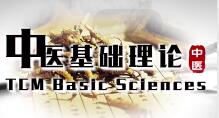
当前课程知识点:Production Engineering > Chapter 7 Water Injection > 7.2 Injectivity Analysis > 7.2.1 Injectivity and Injectivity Index Curves
返回《Production Engineering》慕课在线视频课程列表
返回《Production Engineering》慕课在线视频列表
同学们好
对于油井来说 有一个生产能力
也就是地层向油井供液的能力
那么对于注水井
是不是也有相对应的能力呢
这就是我们这节要学习的
注水井的吸水能力
对于油田注水
有六个字的关键因素
这就是注好水 注够水
其中注够水主要依据的
就是我们要介绍的注水井的吸水能力
首先我们先看一下
注水井的指示曲线
我们学习油井 我们知道
油井有一个IPR曲线
IPR曲线指的是油井的井底流压
跟实现的产量之间的对应关系
那么对于注水井来说
在稳定流动条件之下
注入压力与注水量之间的关系曲线
我们就称为注水井的指示曲线
这是一条典型的注水井的指示曲线
它是由注入压力和注水量
两个坐标下的一条曲线组成的
那么这条曲线有什么样的特点呢
首先 它是一条斜直线
表达的是注入的单相水
所以注入压力和注水量之间
是一个线性的关系
另外它是一个递增的曲线
就是因为提高注入压力
会有更大的注水量注入到井下去
另外我们还注意到
如果将这条曲线向下端延伸
得到的这个交点有什么意义
其实这个交点表达的就是
在注水量为零的时候 它的注入压力
也就是地层的静压
注水的指示曲线 对于一口注水井来说
是非常重要的一个特征曲线
对于生产井有生产指数
那对于注水井 是不是也有相对应的指数
这个地方就是 我们要介绍的吸水指数
吸水指数表达的是
单位压差下 每天的注水量
它反映了地层吸水能力的好坏
我们可以看出这个指数
跟生产井的采液指数是对应的
吸水指数从定义式上我们可以得到
它是用日注水量比上注水的压差
也就是注水井的流压
减去注水井的静压
如果采用这个公式
去计算吸水指数的时候
我们要知道注水井的静压
同时要知道一个注入工作点
也就是一个注入量
和它对应的注水井的流压
如果我们不知道注水井的静压
我们就需要知道两个注入的工作点
也就是两种工作制度下的
吸水量差值比上两种工作制度上的
流压的差值
我们用这个公式 它的基础就是
我们已知注水的指示曲线
是一条斜直线
也就是注入量跟注入压差
是一个线性的关系
我们才可以采用
这样的一个公式去计算吸水指数
为了去除不同的层厚
对于吸水量大小的影响
我们采用了米吸水指数这个概念
它指的就是单位有效厚度下
地层吸水指数的大小
它的单位是每天每千帕每米 立方
吸水指数和米吸水指数这些概念
是表达一口注水井的吸水能力
大小的指标 是我们确定
不同的注入压力的关键因素
所以是非常重要的
下面的一个概念叫做视吸水指数
它表达的是井口压力
与日注水量之间的一个比值
那么这个在油田上经常采用的概念
它并不是真实的吸水指数
但是它可以相对的表达
一口井的吸水能力
特别是一口井吸水能力改变的情况
为什么要引入这样一个视吸水指数
主要的原因就在于
井口压力对于油田来说
是比较容易获取的一个参数
而井底的注入流压
是一般很难测到的
所以采用了一个比较容易获取的参数
去相对地表达一口井的吸水能力
这就是视吸水指数的
这样一个概念的提出
下面的一个概念叫做相对吸水量
相对吸水量主要是针对多层油藏来说
在同一个注入压力之下
某一个小层它的吸水量大小
占全井吸水量的百分数
对于多层油藏某一个小层的
吸水量大小的百分数
表达了这个小层 它的吸水能力
跟其他小层吸水能力之间的相对差别
我们了解油层的相对吸水量
就有可能让我们对于每一个小层
去制定它所对应的注入压力和注入量
这就是本节介绍的主要内容
同学们再见
-1.1 Main Tasks of Production Engineering
--1.1 Main Tasks of Production Engineering
-1.2 Flow in Production System
--1.2 Flow in Production System
-Problems
--Chapter 1 - Problems
-2.1 IPR Curve and Well Productivity
--2.1.1 Single-Phase Oil Inflow Performance Relationships
-2.2 Vogel's IPR and Applications
--2.2.2 Determination of IPR Curves Using Vogel's Equation
--2.2.3 Skin Factor and Flow Efficiency
--2.2.4 Extension of Vogel's Equation for Non-Complete Wells
--2.2.5 Combination Single-Phase Liquid and Two-Phase Flow
-Problems
--Chapter 2--Problems
-3.1 Two-Phase Flow in Wellbore
--3.1.1 Flow Regimes in Vertical Flow
-3.2 Two-Phase Vertical Flow Pressure Gradient Models
--3.2.1 Two-Phase Pressure Gradient Equations
--3.2.2 Predicting Gas-Liquid Flow Regimes Using the Okiszewski Correlation
--3.2.3 Pressure Gradient Calculation Using the Okiszewski Correlation
-3.3 Vertical Lift Performance
--3.3 Vertical Lift Performance
-Problems
--Chapter 3--Problems
-4.1 Nodal Analysis Approach
--4.1.2 Solution Node at Bottom of Well
--4.1.3 Solution Node at Wellhead
-4.2 Flow through Chokes
--4.2.2 Solution Node at Choke
-Problems
--Chapter 4--Problems
-5.1 Principles of Gas Lift
--5.1.2 Initial Kick-off of Gas Lift
-5.2 Gas Lift Valves and Gas Lift Completions
-5.3 Gas Lift Design
--5.3.1 Gas Lift Design for Specific Production Rate
--5.3.2 Gas Lift Design for Specific Injection Rate
--5.3.3 Kick-off Procedure with Unloading Valves
--5.3.4 Design Depths of Unloading Valves
-Problems
--Chapter 5--Problems
-6.1 Introduction of Surface and Downhole Equipment
-6.2 Operating Principle of Sucker Rod Pumps
-6.3 Pumping Unit Kinematics
--6.3.1 Motion of Polished Rod-Simple Harmonic Motion
--6.3.2 Motion of Polished Rod-Crank and Pitman Motion
-6.4 Polished Rod Load
--6.4.3 Peak Polished Rod Load and Minimum Polished Rod Load
-Problems
--Problems for chapter 6: Sucker Rod pumping I
-6.5 Calculation of Counterbalancing, Torque and Power
--6.5.1 Balance of Pumping Unit
--6.5.2 Counterbalancing Calculation
--6.5.3 Torque and Torque Factor
-6.6 Volumetric Efficiency of Pump
--6.6.2 Gas Effect on Pump Performance
--6.6.3 Measures of Enhancing Pump Volumetric Efficiency
-6.7 Design of Pumping System
--6.7.1 Strength Calculation and Design of Sucker Rod Strings
--6.7.2 Design Procedures of Pumping System
-6.8 Analysis of Sucker Rod Pumping Well Conditions
--6.8.1 Acoustic Surveys and Analysis of Annular Liquid Levels
--6.8.2 Introduction of Dynamometer Card
--6.8.3 Typical Dynamometer Cards
-Problems
--Problems: Chapter 6: Sucker Rod Pumping (II)
-7.1 Water Injection System
--7.1.1 Water Resources and Water Treatment
--7.1.2 Introduction of Water Injection System
-7.2 Injectivity Analysis
--7.2.1 Injectivity and Injectivity Index Curves
-7.3 Injection Tubing String
--7.3 Introduction of Injection Tubing Strings
-7.4 Analysis and Application of Injectivity Index Curves
--7.4.1 Analysis of Injectivity Index Curves
--7.4.2 Injection Choke Deployment
-Problems
--Chapter 7--Problems
-8.0 Introduction
-8.1 The Fracturing of Reservoir Rock
--8.1.1 Basic Rock Mechanics Parameters
--8.1.4 Fracture Initiation Conditions
-Problems
--Chapter 8(I)--Problems
-8.2 Fracturing Fluids
--8.2.2 Fluid-Loss Properties of Fracturing Fluids
--8.2.3 Rheological Properties of Fracturing Fluids
-8.3 Proppants
-8.4 Hydraulic Fracturing Design
--8.4.1 Productivity Index of Hydraulic Fracturing Wells
--8.4.2 Fracture Geometry Models
--8.4.3 Design Procedure for Hydraulic Fracturing
-Problems
--Chapter 8(II)--Problems
-9.0 Introduction
-9.1 Carbonate Acidizing
--9.1.1 Mechanism of Carbonate Acidizing
--9.1.2 Effect Factors of Reaction Rate
--9.1.4 Effective Distance of Live Acid
-9.2 Sandstone Acidizing
--9.2.1 Mechanism of Sandstone Acidizing
--9.2.2 Mud Acid Treatment Design
-9.3 Acidizing Treatment Technologies
--9.3.2 Acidizing Treatment Operations
-Problems
--Chapter 9--Problems
-Final Exam

